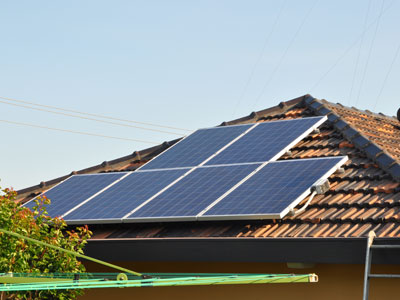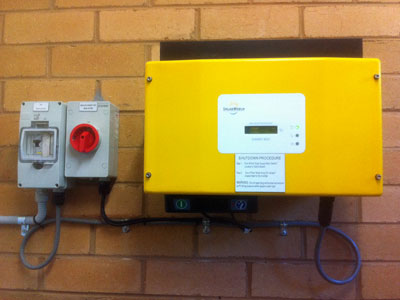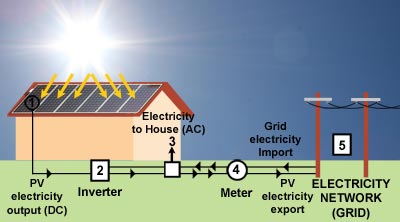
Absolute Electrics can supply and install solar electricity to your house
-

-
Solar Electricity Systems
- Solar power systems are the natural choice to help reduce the impact of greenhouse gas emissions on our environment and reduce your energy costs.
- A Solar power system is not only an investment in the future of our planet, it is an investment that will show returns as soon as your first electricity bill arrives.
- Solar power is becoming one of the most popular solutions to help individuals and businesses reduce their carbon footprint and lower their electricity bills.
- Installing a solar power system will reduce our reliance on fossil fuels and provide a healthier planet for future generations to come.
- With electricity process constantly on the rise, there is no better time to invest in your future and install your solar Power System.
-

-
Benefits of Solar Installation
- Once the system is installed, electricity is generated from a "Free" resource - the Sun.
- Solar electricity is generated without emitting greenhouse gases.
- Solar panels or modules are silent, without moving parts.
- Solar modules are generally unobtrusively mounted on an existing roof.
- Solar modules can be integrated into the building in the form of windows, walls roof tiles or pergolas.
- Solar electricity can supplement or provide all your electricity consumption.
- Solar electricity can be fed back into the grid.
- Additional solar modules can be added later as demand or budget grows.
- A solar module should last for at least 20-30 years.
-
Top Ten tips when buying/installing Solar Electricity System
The Clean Energy Council recommends that consumers follow these top 10 tips when buying a solar power system: 1. Be an informed consumer. Research your options, be clear on your needs and compare quotes. 2. Know your daily electricity consumption. By understanding what you use, you can assess how much you would like your solar system to generate, depending on your budget. 3. Get an estimate of how much energy your system will generate. Your contract should include an estimate of the average daily output of your system in kilowatt-hours (based on where you live and the size and position of your system). 4. Check with your electricity retailer. Never purchase a solar system without knowing what rate you will be paid for the electricity you generate and whether this will affect any hourly rates in your electricity bill. 5. Always use a Clean Energy Council Accredited Installer. You can check your installer is accredited at www.solaraccreditation.com.au 6. Avoid signing up on the spot. You should not feel pressured to sign a contract on the spot. Take the time to understand up-front costs, warranties and pay back of your solar PV System. 7. Use products that meet Australian standards. Your installer must provide proof the panels and inverters meet the standards. You can also check the product list at www.solaraccreditation.com.au 8. Check the conditions of product warranties and work guarantees. Know who is providing the warranty (manufacturer or importer) and how long it lasts. 9. Keep the documentation. A copy of your contract is necessary to resolve any disputes down the track. 10. Remember, if it sounds too good to be true, it probably is. Download these tips
-

-
Types of Solar Installations
Grid Connected
The most popular type of solar PV system for homes and businesses. The solar system is connected to the local electricity network allowing any excess solar electricity produced to be sold to the network. Electricity is taken back from the network outside daylight hours. An inverter is used to convert the DC power produced by the solar system to AC power needed to run normal electrical equipment.
Off-Grid
Completely independent of the grid, the solar system is directly connected to a DC battery which stores the electricity generated and acts as the main power supply. An inverter can be used to provide AC power, enabling the use of normal appliances without mains power.
-

-
- 1. Solar PV modules suppling DC power
- 2. An Inverter changing the solar DC power into 240v alternating current (AC) suitable for your household appliances and feeding into the grid.
- 3. Your home uses electricity firstly from the solar PV modules with additional demand supplied from the grid.
- 4. A meter measuring your electricity production and consumption
- 5. Any excess is 'exported' to the electricity grid

